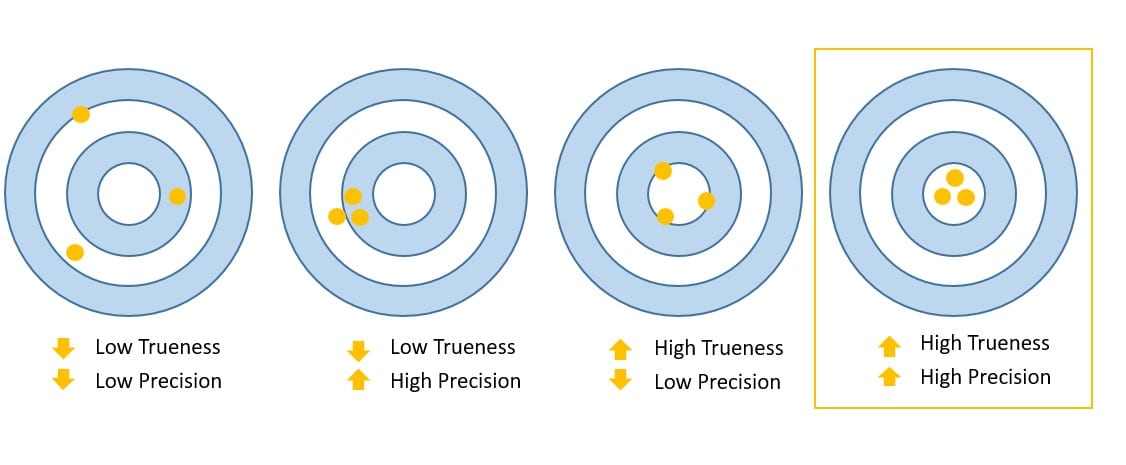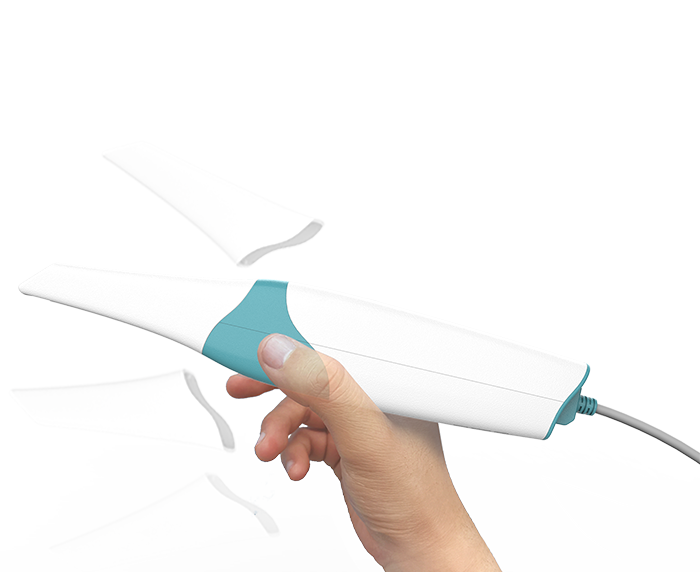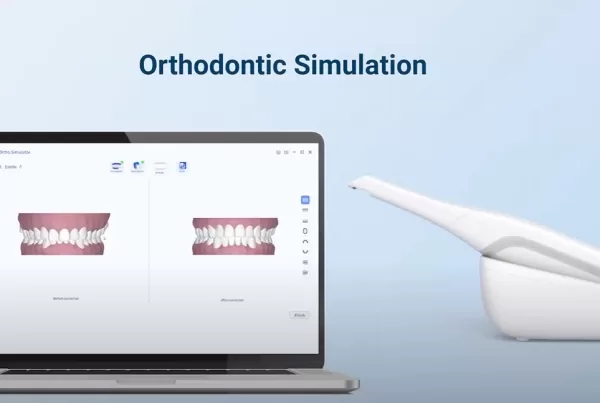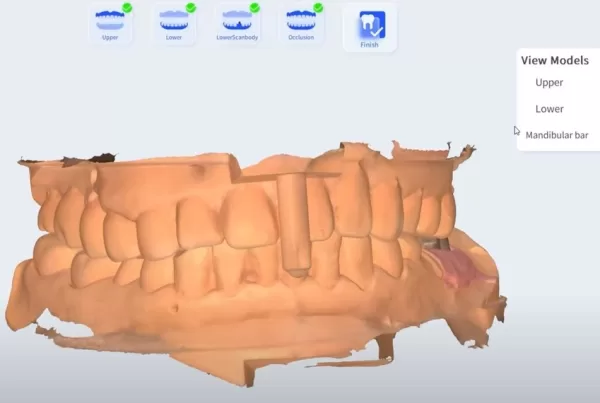If you search on the Internet “What to consider when choosing the best intraoral scanner?”, you will easily find that accuracy is often at the top of the evaluation criteria list. In this article, I will give you a walkthrough of what accuracy is, and how it affects your treatment in the digital world.
What is accuracy?
Accuracy is the major method to evaluate the quality of intraoral scanners. The consensus on what Accuracy stands for is documented in the ISO 5725-1 standard and comprises two elements: Trueness and Precision.
Trueness vs. Precision
Trueness is defined as the ability of a measurement to match the actual value, and precision is defined as the ability of a measurement to be consistently reproduced.
To demonstrate clearly the difference between trueness and precision, here we can take shooting as an example. Trueness refers to your ability to hit your target in the correct spot, i.e., the center. Precision is your ability to hit the same area every time you shoot, whether it is the bulls-eye or the outer ring.

Scanning and getting the correct measurements for the prosthesis on your first try will save you time (trueness). And if you are able to repeat that each time you scan a certain patient, then you may get good reviews (precision).
The Benefit of Accuracy in Digital Dentistry
In general, digital intraoral scanning delivers better accuracy than traditional methods; for example, digital technology eliminates inaccuracies caused when taking the impression. Digital impressions also allow the doctor to check the impression and easily correct mistakes before submission to the lab. Plus, by using a secure online portal to send digital impressions, there’s no risk of models breaking, expanding or shrinking during transport.
However, the accuracy of digital scans can vary greatly between different brands. Poor-quality digital impressions are usually with missing data, poorly marked margin lines or dull color. All these problems can lead to ill-fitting final restorations and unhappy patients.
Accurate scanning brings you fewer retakes, happier customers, and more streamlined work. Therefore, your scanner must be of high accuracy. When choosing an ideal scanner, a comparison of different brands is always essential. For the best intraoral scanner, it should feature a high degree of trueness to capture micro details, as well as a high rate of precision to ensure consistency. In addition, it is also important to have the accuracy to support all types of restorative work, like crowns, bridges, dentures, partial dentures, etc.


